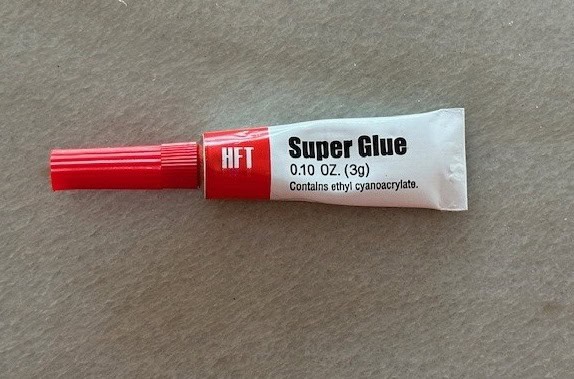Super glue, also known as cyanoacrylate adhesive, is a fast-bonding, high-strength adhesive that works well on a variety of surfaces. It’s widely used in DIY projects, repairs, and crafts due to its ability to bond almost instantly and its versatility in sticking materials like plastic, metal, wood, ceramics, and more.
History of Super Glue
Super glue was accidentally discovered in 1942 by Dr. Harry Coover, a chemist working for Eastman Kodak. Initially, it was deemed too sticky for its intended purpose, but Coover later realized its potential as a powerful adhesive. In 1958, it was marketed as “Eastman 910,” and it quickly gained popularity in both industrial and consumer markets. Its ability to bond quickly and securely made it a staple in households and workshops worldwide.
Types of Super Glue
- Liquid Super Glue: The most common type, ideal for tight spaces and small repairs.
- Gel Super Glue: Thicker consistency, perfect for vertical applications and porous surfaces.
- Brush-On Super Glue: Comes with an applicator brush for precise application.
- Foam Safe Super Glue: Specially formulated to bond foam without causing damage.
- Plastic Bonding Super Glue: Designed for bonding plastics, including difficult-to-glue plastics like polypropylene and polyethylene.
Key Features of Super Glue
- Fast Bonding: Bonds surfaces in seconds.
- High Strength: Provides a strong, durable bond.
- Versatility: Works on various materials including plastic, metal, wood, and ceramics.
- Precision Application: Available in various forms for accurate application.
- Water-Resistant: Offers resistance to water and moisture once cured.
Choosing the Right Super Glue
When selecting super glue for a project, consider the materials you’re working with and the type of bond you need. For example, gel super glue is ideal for porous surfaces, while liquid super glue is better for non-porous surfaces. If you’re working with plastic, look for a super glue specifically designed for plastic bonding. The choice of applicator—whether it’s a precision tip, brush, or gel—also plays a role in achieving the best results.
Super Glue Recommendations
- 12 Grams Super Glue, 12 pieces
- Loctite Super Glue Easy Squeeze Gel, .14 oz
- Gorilla Super Glue, Four 3 Gram Tubes
Proper Use and Techniques
To use super glue effectively, clean the surfaces to remove any dust, grease, or oil. Apply a small amount of glue to one surface, then press the surfaces together and hold them for about 10-30 seconds, depending on the type of glue. Avoid using too much glue, as this can weaken the bond and cause it to take longer to set. For larger surfaces, apply glue in dots rather than a continuous line to ensure a strong bond.
Maintenance and Care
Super glue should be stored in a cool, dry place, preferably in its original packaging or an airtight container. Keeping it in a refrigerator can extend its shelf life. After each use, wipe the nozzle to prevent clogging and tightly cap the bottle. If the nozzle does clog, a pin or needle can help clear it.
Super Glue Safety Tips
Super glue is a powerful adhesive, so handling it with care is crucial. Always work in a well-ventilated area, wear gloves to protect your skin, and avoid contact with your eyes. If glue gets on your skin, soak the area in warm soapy water and gently peel it off. In case of contact with eyes, seek medical attention immediately. Keep super glue out of reach of children and pets.
Conclusion
Super glue is an indispensable tool for DIY enthusiasts, offering quick, strong bonds across a wide range of materials. By selecting the right type, applying it correctly, and following safety guidelines, you can make the most of this versatile adhesive in your projects.


